![]() Key Takeaway
Key Takeaway
Specific Pokémon can be traded to evolve instead of paying the Candy cost. The cost of Stardust during the trade is determined by Friendship Level, whether the player has registered the Pokémon previously or not to their Pokédex, and whether the Pokémon is Regular, Shiny, Purified, or Legendary. Trading in general includes a list of restrictions, but Special Trades specifically can only take place once per day.
To complete your Pokédex and get specific Pokémon in Pokémon GO, you’ll need to know the ins and outs of trading costs, evolutions, and special restrictions. You can also help friends out with their Pokédex through trading.
Table Of Contents
What Is Trading?
Trading in Pokémon GO involves two players swapping Pokémon with each other. Players must be level 10 or above to be able to trade. You also must be physically near the person you’re seeking to trade with (within 100 meters or 328 feet) to establish the connection for trading.
This process will involve both you and your trading partner spending Stardust to complete. Most Pokémon can be traded, but the cost of the trade varies depending on which Pokémon are involved.
Why Trade Pokémon?
There are various reasons you might be interested in trading Pokémon in Pokémon GO. For starters, there is a good chance that a friend may have picked up a Pokémon you don’t have yet. If they’re willing, your friend can trade you this Pokémon and it will then count towards completing your Pokédex. Furthermore, a friend who is a higher level might be able to help you by trading you a more powerful Pokémon, though this will have an impact on the Stardust cost it will take to complete the trade.
Note that trading Pokémon will change the CP, HP, and stats of the Pokémon within a certain range. This range will be displayed to you during the trade. Additionally, you can evolve some Pokémon through trading.
How to Trade Pokémon
Assuming you are level 10 or higher and are within 100 meters (or 328 feet) of your intended trade partner, you can complete a trade in Pokémon GO. You must be friends with this person in the app to complete a trade. If you need to add someone as a friend, simply share your 12-digit Trainer Code found in the Trainer section under the Friends tab. Follow these simple steps to complete a trade:
1. Open the Friends tab from the Trainer Profile.
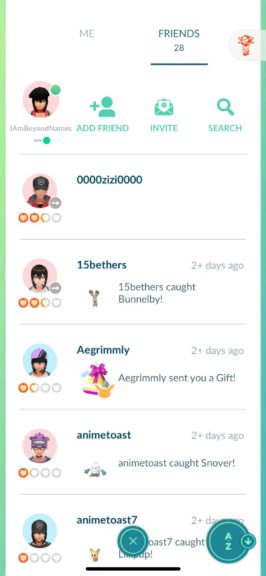
2. Select the Trainer you wish you trade with.
3. Tap the trade button.
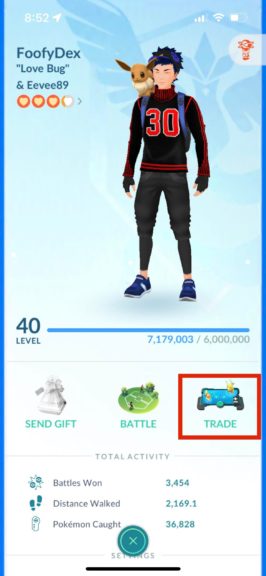
4. Select the Pokémon you wish to trade and tap “Next.”
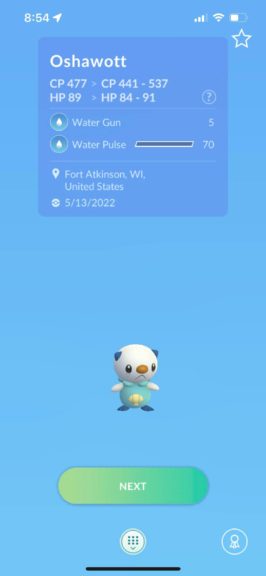
5. Confirm the trade by selecting “Confirm.”
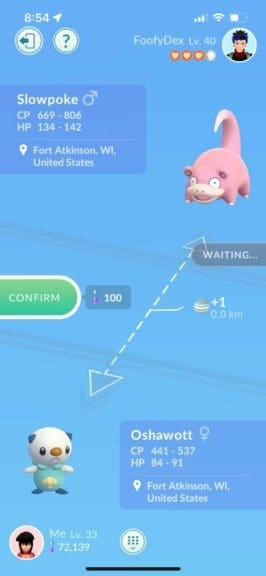
The amount of Stardust required for the trade and the amount of Candy you will receive will be displayed next to the confirm button. The amount of Candy you can receive depends on the distance between where each Pokémon in the trade were caught from. The greater the distance, the more Candy you will get.
Cost of Trading
The cost of a trade in Pokémon GO is dependent on a few factors. To start, your Friendship Level with the other player can influence the cost of the trade. Additionally, whether each player has logged the Pokémon that are being traded in their Pokédex will greatly influence the cost. Finally, whether the trade involves Regular, Shiny, Purified, or Legendary Pokémon, or Pokémon that haven’t been registered to a player’s Pokédex yet, will also make a difference. If you’ve achieved Lucky Friend Status, which will be discussed later in this guide, that will also impact the cost of trading Pokémon.
The following is a breakdown of the trading costs for Regular Pokémon:
| Friendship Level | Trading cost when Pokémon is registered on both players’ Pokédex | Trading cost when Pokémon isn’t registered on a player’s Pokédex: |
|---|---|---|
| Good | 100 Stardust | 20,000 Stardust |
| Great | 100 Stardust | 16,000 Stardust |
| Ultra | 100 Stardust | 1,600 Stardust |
| Best | 100 Stardust | 800 Stardust |
The following is a breakdown of the Special Trade costs for Legendary, Shiny, or Purified Pokémon, or Pokémon that haven’t been registered to your Pokédex yet:
| Friendship Level | Trading cost when Pokémon is registered on both players’ Pokédex | Trading cost when Pokémon isn’t registered on a player’s Pokédex |
|---|---|---|
| Good | 20,000 Stardust | 1,000,000 Stardust |
| Great | 16,000 Stardust | 800,000 Stardust |
| Ultra | 1,600 Stardust | 80,000 Stardust |
| Best | 800 Stardust | 40,000 Stardust |
Note that trading costs have scaled down 10 to 25% during events historically, so your best bet may be to wait on Special Trades until an event is running.
Deciding What and Who to Trade With
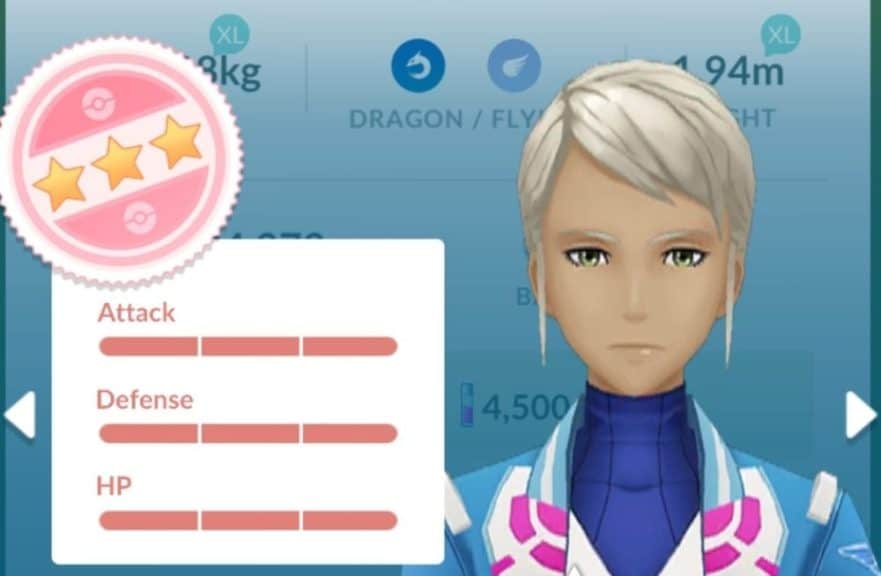
via Twinfinite
Pokémon IVs
A lot more goes into determining the strength and value of a Pokémon besides its CP. There are hidden base stats called Individual Values, or IVs. In short, if you have two of the same Pokémon at the exact same level, the one with the higher IV will have a higher CP and Stamina.
IVs also have an impact on the Pokémon’s Attack and Defense stats. To check a Pokémon’s IV, use the Appraise function on your Pokémon in Pokémon GO. If your Pokémon has three stars and a red stamp, it means that it has perfect IVs. If it has three stars with an orange stamp, it has around 80-99% IVs, and so on.
This is relevant to trading Pokémon, because the higher the friendship level you have with your intended trading partner, the greater chance the Pokémon you receive will have higher IVs. Thus, you’ll want to take that into consideration when deciding to commit to a trade.
Lucky Friends and Lucky Pokémon
The best possible trade you can make is with someone you’ve become Lucky Friends with. To become Lucky Friends with someone, you must already be Best Friends with them first. All you must do from there is continue to send each other gifts and do battles together. Eventually, you will achieve Lucky Friend status. However, note that you only have one shot at becoming Lucky Friends each day, so you only need to send a gift and or a battle together once per day. You will both receive a notification if you’ve achieved Lucky Friend Status.
If you trade a Pokémon with a Lucky Friend, that Pokémon will be considered a Lucky Pokémon. This means it will have guaranteed higher IVs and will cost less Stardust to trade. More than that, the Pokémon will also only take half as much Stardust to power up going forward as a normal Pokémon would. Note that just by completing a normal trade, there is always a chance a Pokémon could become Lucky, regardless of whether you are trading with a Lucky Friend.
Full Trade Evolution List
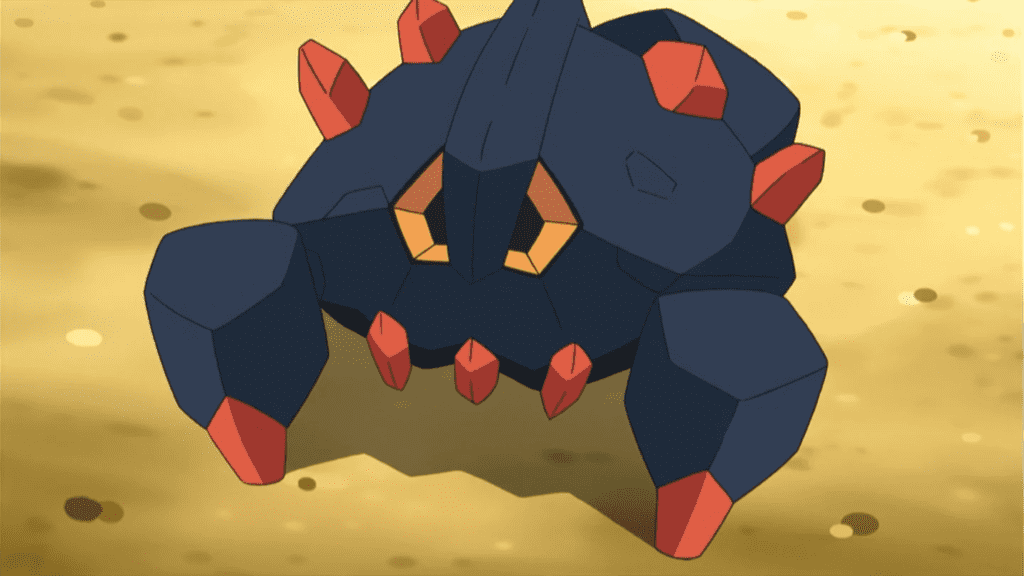
via DBLTAP
There are only certain Pokémon that you can evolve through trading. Trading these Pokémon makes the Candy cost for evolution zero, but this doesn’t necessarily make them “free” evolutions. When trading, you will still need to pay the Stardust cost for the trade, though that can often be easier to achieve than the Candy cost. The following is a full list of Pokémon that can be evolved through trading in Pokémon GO and their Candy evolution cost alternative:
- Boldore: evolves into Gigalith, 200 Candies to evolve without trade.
- Graveler: evolves into Golem, 100 Candies to evolve without trade.
- Gurrdurr: evolves into Conkeldurr, 200 Candies to evolve without trade.
- Haunter: evolves into Gengar, 100 Candies to evolve without trade.
- Kadabra: evolves into Alakazam, 100 Candies to evolve without trade.
- Karrablas: evolves into Escavalier, 200 Candies to evolve without trade.
- Machoke: evolves into Machamp, 100 Candies to evolve without trade.
- Phantump: evolves into Trevenant, 200 Candies to evolve without trade.
- Pumpkaboo: evolves into Gourgeist, 200 Candies to evolve without trade.
- Shelmet: evolves into Accelgor, 200 Candies to evolve without trade.
Trade Restrictions
As to be expected, not every Pokémon can be traded in Pokémon GO. The following is a list of restrictions Niantic has placed on which Pokémon you can trade between friends. You cannot trade:
- Pokémon that were already traded
- Fainted Pokémon or ones not at full health
- Pokémon currently defending gyms
- Pokémon acquired by spoofing or botting
- Mythical Pokémon (except Meltan and Melmetal)
- Current Buddy Pokémon
- Shadow Pokémon
- Unhatched eggs
Special Trade Restrictions
As stated earlier, Special Trades are trades that involve Legendary, Shiny, and Purified Pokémon and also Pokémon that haven’t been registered in the Pokédex yet. Aside from the restrictions listed above, there is one important additional restriction to any trade that involves these Special Pokémon. These Special Trades can only take place once per day. This stops people from obtaining Special Pokémon too easily, so as to keep encouraging the hard work players put in to get them in the first place.


